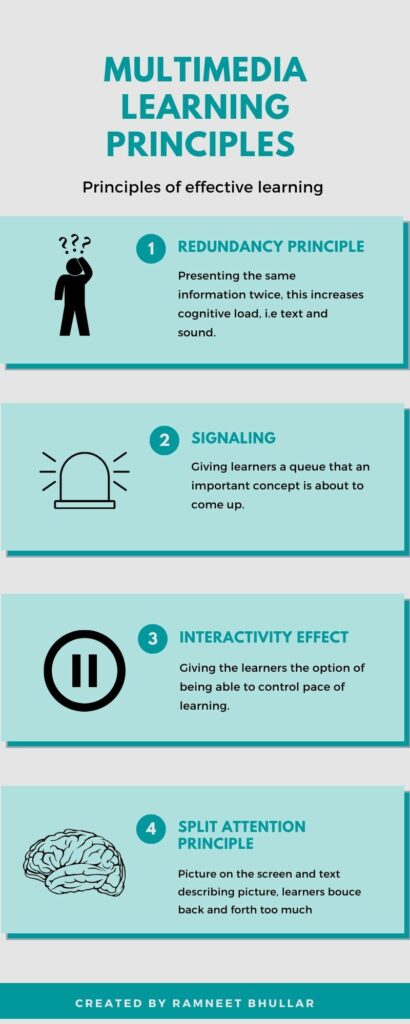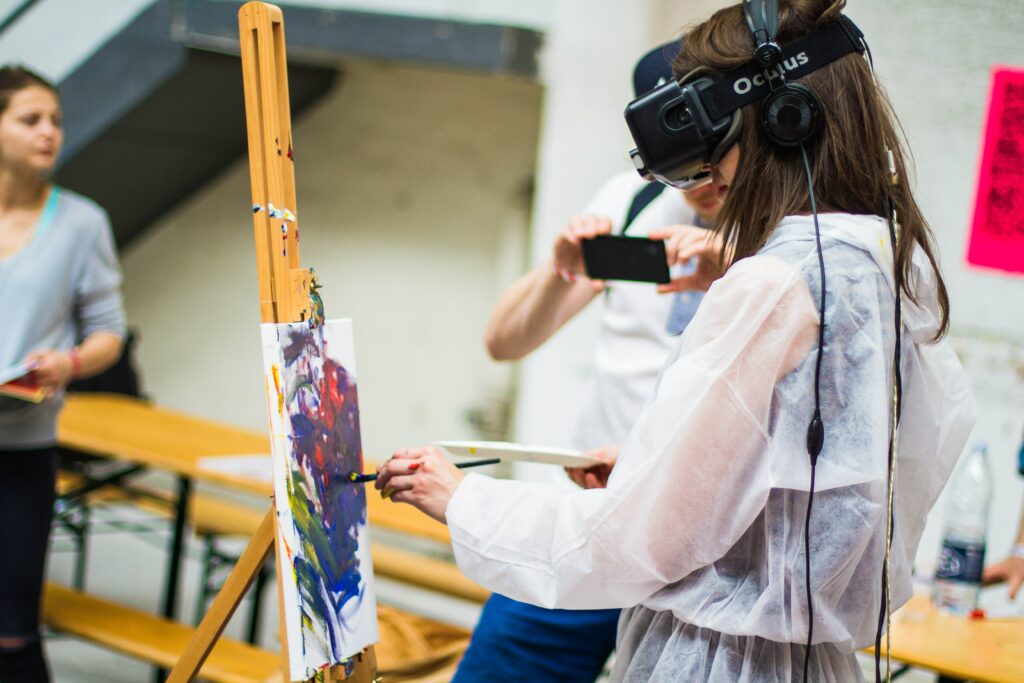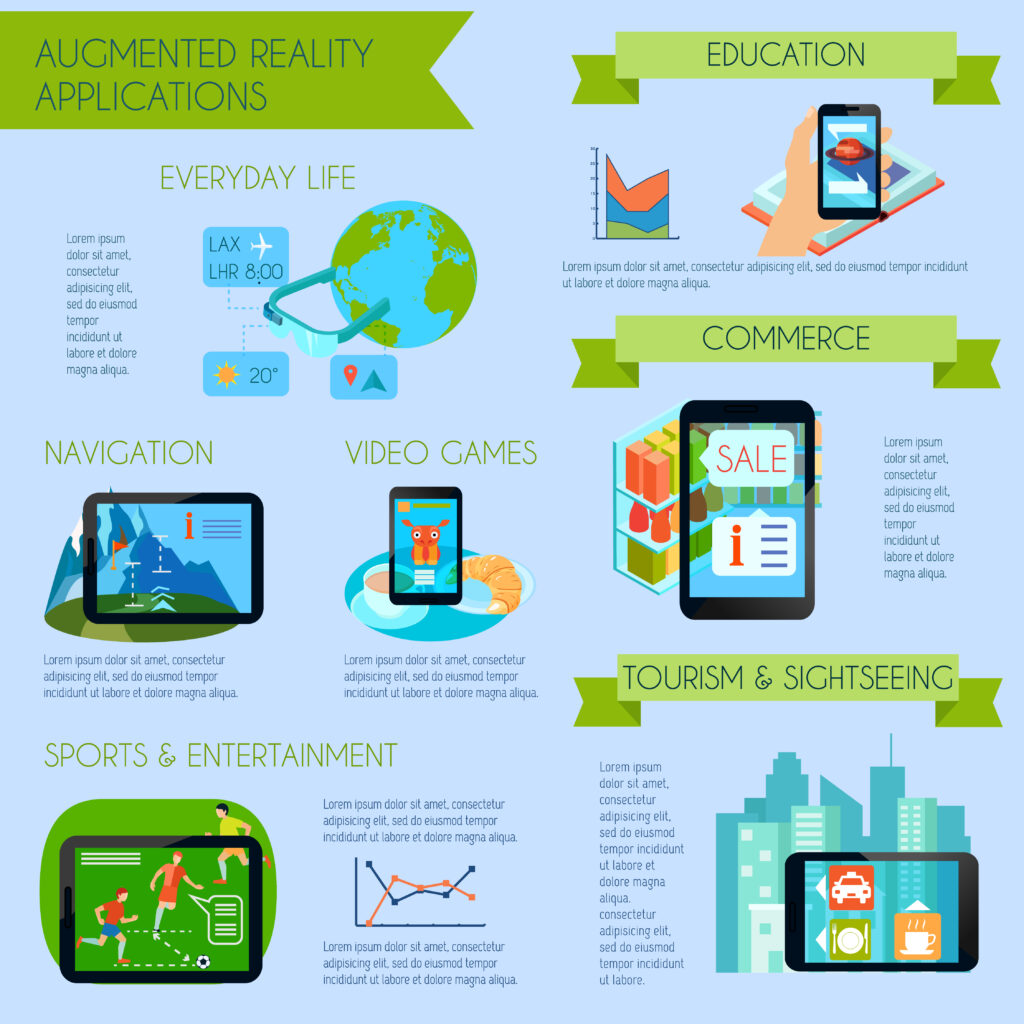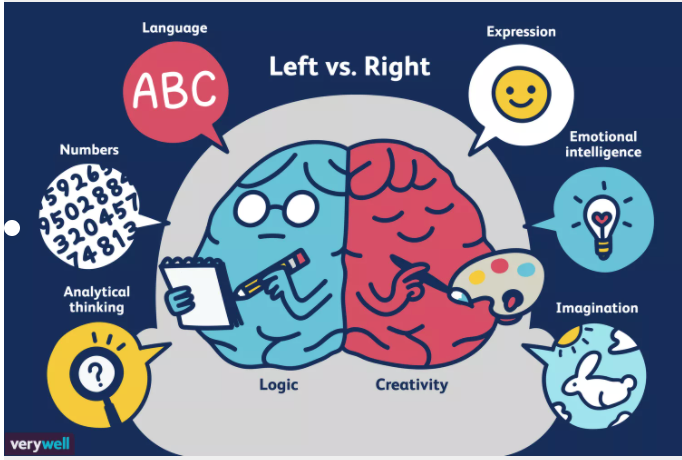
When it comes to multimedia learning, our understanding vastly evolves from our initial workings. From my early days of working with multimedia tools, I can reflect on numerous instances where I used multimedia ineffectively for convenience rather than enhancing the learning experience.
Split Attention Principle: Including images that depict the text creates barriers for learners as they have to constantly switch between text and images. Gauging the right amount of text can be a difficult process that takes lots of trial and error. Below is a PowerPoint I constructed in 2015.

Redundancy principle: This was a principle that surprised me to learn is ineffective. Prior to further investigating, it was my understand that being redundant is effective in processing information for learners, that it helps learners that prefer speech vs. those who prefer text.

Signalling: This has been a key skill in helping me condense text when creating multimedia tools as this allows for me to step back and highlight crucial information and concepts that the learner will understand and are queued to understand.

Interactive Effect: In our current online teaching environment this is an important tool that is often left behind. During synchronous learning sessions that are not recorded, students have immense difficulty listening to 3-hour lectures without any pause button, this follows the segmented principle approach. As a CAL (Center for Accessible Learning) student myself, this can create major barriers in the online learning environment.

References:
Mayer, Richard E. “Cognitive Theory of Multimedia Learning.” The Cambridge Handbook of Multimedia Learning. Ed. Richard E. Mayer. Cambridge: Cambridge UP, 2014. 43-71. Print. Cambridge Handbooks in Psychology.
Mayer, Richard E., and Logan Fiorella. “Principles for Reducing Extraneous Processing in Multimedia Learning: Coherence, Signaling, Redundancy, Spatial Contiguity, and Temporal Contiguity Principles.” The Cambridge Handbook of Multimedia Learning.Ed. Richard E. Mayer. Cambridge: Cambridge UP, 2014. 279-315. Print. Cambridge Handbooks in Psychology.



